News Articles

The Virginia Museum of Natural History (VMNH) and Dan River Basin Association (DRBA) hosted a ...
September 30, 2021
The Virginia Museum of Natural History (VMNH) and Dan River Basin Association (DRBA) hosted a trout release today at the Smith River in Henry County as part of Trout Unlimited's "Trout in the Classroom" program! The trout, which were hatched and cared for at the museum prior today, were released into the wild with the help of several student participants from the museum's Homeschool Science & Engineering Academy. In addition to releasing the trout, staff from DRBA provided several hands-on programs for the students that focused on macro invertebrates and their importance to trout and nature as a whole! Tomorrow, museum staff will begin the trout cycle all over again as new eggs are scheduled to arrive. Next time you ...
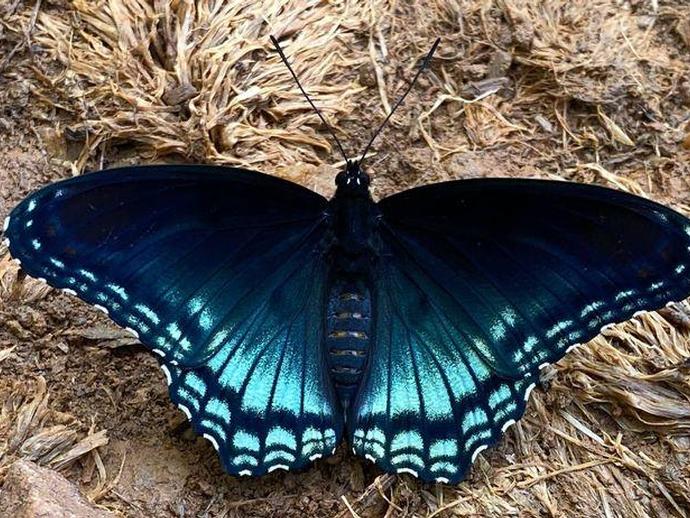
Ben here with today's edition of #BenInNature presented by our friends at Carter Bank & Trust!
September 30, 2021
Ben here with today's edition of #BenInNature presented by our friends at Carter Bank & Trust! I first shared this species about six months ago when I spotted it on a trip to South Carolina, but that individual was pretty beaten-up and rough looking, so I figured I'd share a pristine example! This is Limenitis arthemis, also known as the red-spotted purple or the white admiral, Those two different common names illustrate the most fascinating aspect of this butterfly: depending on where you find it, this species will look wildly different! In the southern part of their range, red-spotted purples look a lot like this one; this is because they have evolved to superficially resemble Battus philenor, the pipevine swallowtail ...
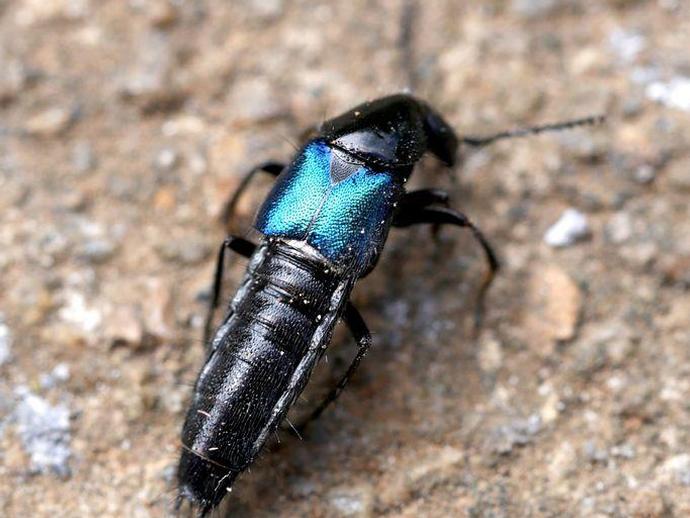
Ben here with the Wednesday edition of #BenInNature presented by our friends at Carter Bank & ...
September 29, 2021
Ben here with the Wednesday edition of #BenInNature presented by our friends at Carter Bank & Trust! This is Philonthus caeruleipennis, and it's one of the most striking rove beetles you're likely to find! Rove beetles are a family (Staphylinidae) of beetles that are mainly distinguished by their elytra, which is the term for the hard shell that covers a beetle's flight wings. Unlike most beetles, rove beetles have short elytra that usually cover less than half of their abdomen. Most rove beetles are fairly dark and drab, but Philonthus caeruleipennis bucks the trend by possessing metallic blue-green elytra! Believe it or not, it does have working flight wings folded up underneath the elytra. This species is a ...
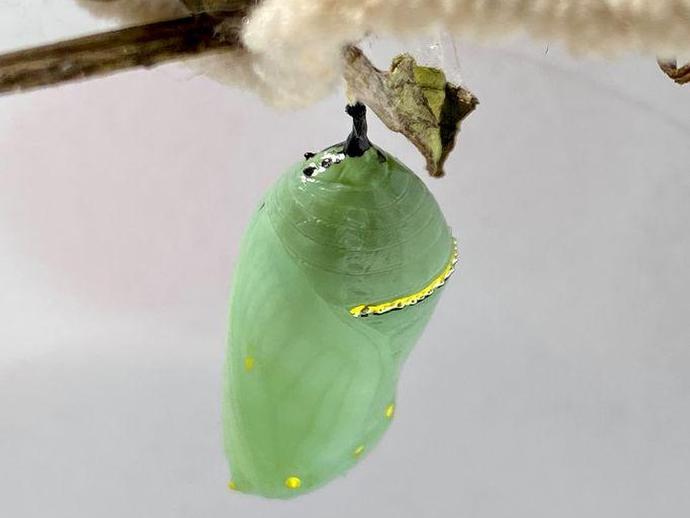
Ben here with the Tuesday edition of #BenInNature presented by our friends at Carter Bank & Trust!
September 28, 2021
Ben here with the Tuesday edition of #BenInNature presented by our friends at Carter Bank & Trust! The other day, VMNH Trades Technician Joe Dillon showed me a monarch butterfly (Danaus plexippus) chrysalis that he's keeping safe until the butterfly emerges! First things first: what exactly is a chrysalis? It's definitely not the same thing as a cocoon! A cocoon is a covering, usually made of silk, that some insects build around themselves to protect them as they grow. A chrysalis, on the other hand, is a pupa; when you see a monarch butterfly chrysalis, you're not looking at a protective shell, you're looking at the butterfly itself, just in a different stage of life! To transform into a chrysalis, a monarch ...

Ben here with today's edition of #BenInNature presented by our friends at Carter Bank & Trust!
September 27, 2021
Ben here with today's edition of #BenInNature presented by our friends at Carter Bank & Trust! Here's something a bit unusual, or at least something I don't recall ever seeing before: a brown katydid! This species is Neoconocephalus triops, also known as the broad-tipped conehead (unlike the more famous coneheads, it does not come from France). It can be found in the southeastern U.S. and at the southern extent of its range it stretches west all the way to California. Coneheaded katydids have an interesting defense mechanism: when startled, they will fly away and often dive towards the ground, at which point they'll stick their head into the dirt, which makes the rest of their body resemble a blade of grass! What's ...

We're reaching into the archives for today's #BenInNature update presented by our friends at ...
September 26, 2021
We're reaching into the archives for today's #BenInNature update presented by our friends at Carter Bank & Trust! The following post was originally published on August 10, 2020. Back in May (2020), we looked at spittlebugs, which are the tiny little insect nymphs that hide inside a protective barrier of foam on the stems of plants (you can see an example of a spittlebug in the second picture). If you were left wondering what the adults look like, then today is your lucky day! This is Prosapia bicincta, also known as the two-lined spittlebug. Adult spittlebugs are also known as "froghoppers" because of their incredible jumping skills. Froghoppers jump from one plant to another, and some species can jump more than two ...
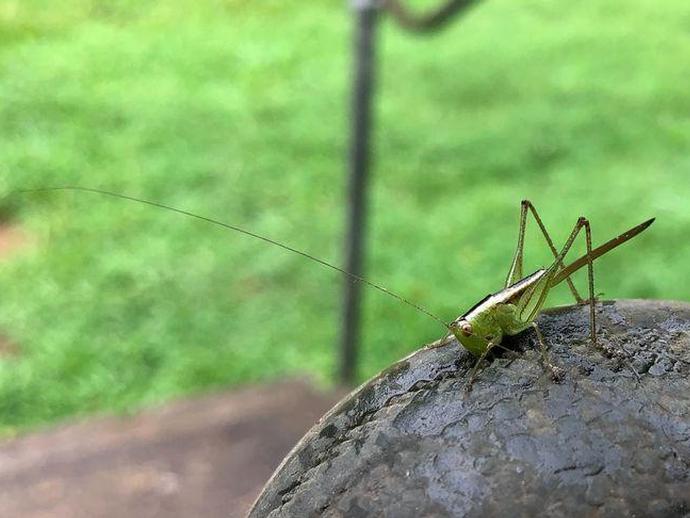
We're reaching into the archives for today's #BenInNature update presented by our friends at ...
September 25, 2021
We're reaching into the archives for today's #BenInNature update presented by our friends at Carter Bank & Trust! The following post was originally published on August 9, 2020. This little lady that I found hanging out on the toe of my boot is Conocephalus strictus, also known as the straight-lanced meadow katydid. When we think of katydids, we usually think of the larger species that tend to show up to porch lights at night. However, katydids come in a variety of sizes. This particular species is identifiable by the length of the ovipositor, which is the tube-like organ that some insect species use to lay their eggs. The females of Conocephalus strictus have an ovipositor longer than their body, which is where their ...
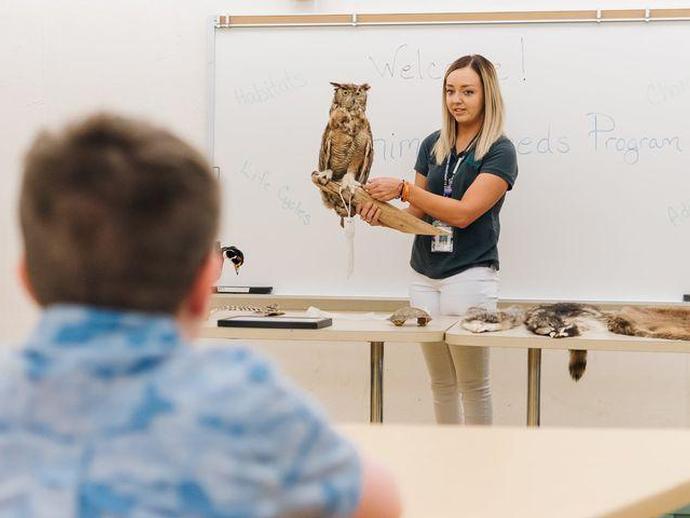
JOB OPPORTUNITY: Museum Educator The museum's education department is now seeking applicants ...
September 24, 2021
JOB OPPORTUNITY: Museum Educator The museum's education department is now seeking applicants for the position of Educator! As a VMNH educator, you will join a vibrant education team to provide a wide variety of the museum's education and public programming, including programs at the museum, outreach, distance learning, after school, summer camps, sleepovers, and special events! All staff educators are involved in the design, development, and evaluation of education programs. The successful candidate will contribute to and strengthen this team dynamic, possess an enthusiasm to implement progressive teaching methods, and exhibit exceptional communication skills to reach diverse audiences. Click the link below to learn ...

Ben here with today's edition of #BenInNature presented by our friends at Carter Bank & Trust!
September 24, 2021
Ben here with today's edition of #BenInNature presented by our friends at Carter Bank & Trust! This is the differential grasshopper (Melanoplus differentialis), and I was a bit surprised to find it in Patrick County the other day. While this species occurs throughout most of the U.S. and Mexico, the range maps I've seen show that it's not generally found along the southeast coast, and Patrick County is probably close to the eastern extent of its range in Virginia! The fact that this grasshopper doesn't extend too far east is good news for Virginia farmers because this species can be a serious pest. These grasshoppers prefer to eat "forbs," which is a term for herbaceous flowering plants that are not grasses. However, it ...
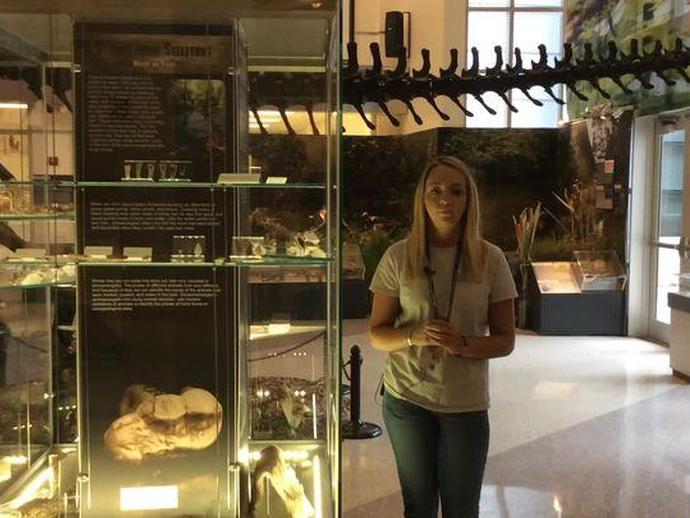
VMNH Educator Terri Robertson is inside the Harvest Foundation Hall of Ancient Life for this ...
September 24, 2021
VMNH Educator Terri Robertson is inside the Harvest Foundation Hall of Ancient Life for this week's episode of "Museum Minute", as she highlights fishing and hunting specimens found within the hall's glass column cases! ABOUT MUSEUM MINUTE The Virginia Museum of Natural History has a spectacular assortment of displays within its exhibit galleries! Some displays are unforgettable, while others don't always get the attention they deserve. Through the original series "Museum Minute", museum educators highlight various displays throughout the exhibit galleries, while providing intriguing facts you may not have known. "Museum Minute" is made possible thanks to VMNH Corporate Partners Carter Bank & Trust(www.cbtcares.com) and ...

VMNH Curator of Mammalogy Dr
September 23, 2021
VMNH Curator of Mammalogy Dr. Nancy Moncrief and Assistant Curator of Paleontology Dr. Adam Pritchard traveled to Salem, Virginia last Friday to participate in the Roanoke College Dragon Fest! The two curators brought with them multiple specimens from the museum's paleontology and zoology collections for a bit of science outreach. The dragon-like specimens they displayed included 300-million-year-old Lepidodendron tree trunks with bark that looked like lizard scales, as well as the wings of a giant bat, a bird, and a pterosaur to show the skeletons of flying animals! Don't miss the museum's very own Dragon Festival on Friday, October 15 and Saturday, October 16 from 10am to 6pm each day! www.vmnh.net/events/dragon-festival

Ben here with the Thursday edition of #BenInNature presented by our friends at Carter Bank & ...
September 23, 2021
Ben here with the Thursday edition of #BenInNature presented by our friends at Carter Bank & Trust! Japanese honeysuckle (Lonicera japonica) normally blooms in the spring and early summer, although I found this plant still blooming just last week! I remember being shown as a child how to pluck flowers from honeysuckle, pinch the rear of the flower in such a way as to cut through the flower without breaking the style, and then pull the style through the rear of the flower, drawing out a drop of delicious nectar with it. It's pretty tasty stuff (just make sure that the plants haven't been sprayed with any weed killer if you decide to try it yourself)! As the name suggests, Japanese honeysuckle is native to eastern Asia ...

Congratulations to Alicia Lantz for being recognized as the VMNH Volunteer of the Month for ...
September 22, 2021
Congratulations to Alicia Lantz for being recognized as the VMNH Volunteer of the Month for September! Alicia has provided invaluable support inside the museum's paleontology and archaeology labs for years and she continues to graciously offer her time to serve as an important part of the museum's Research & Collections team. Congratulations, Alicia, and thanks for all you do for VMNH!
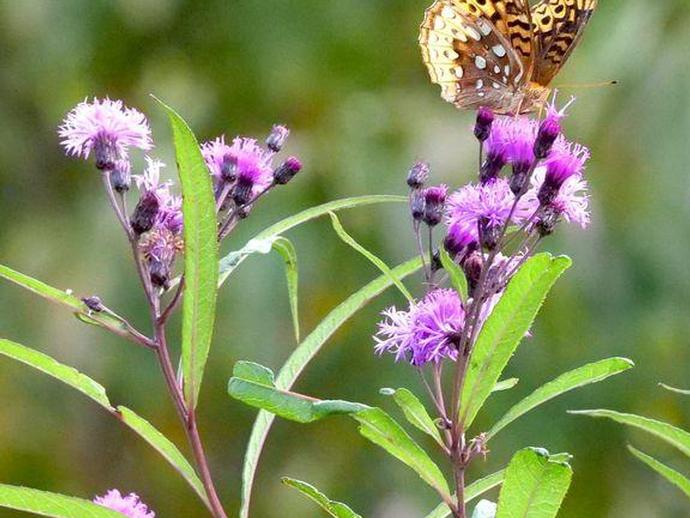
Ben here with the Wednesday edition of #BenInNature presented by our friends at Carter Bank & ...
September 22, 2021
Ben here with the Wednesday edition of #BenInNature presented by our friends at Carter Bank & Trust! Today's post isn't about the butterfly; instead, it's about the plant that the butterfly is enjoying. This is ironweed, which belongs to the genus Vernonia, and if you like seeing butterflies, this is a wonderful native plant to keep around. (Also, the butterfly is Speyeria cybele, also called the great spangled fritillary -- I've done a post or two about them before.) The genus vernonia contains about 350 species. They generally have intensely purple flowers and tough, dark-colored stems. I think this particular species might be Vernonia noveboracensis, also known as New York ironweed, which is common on the east coast ...
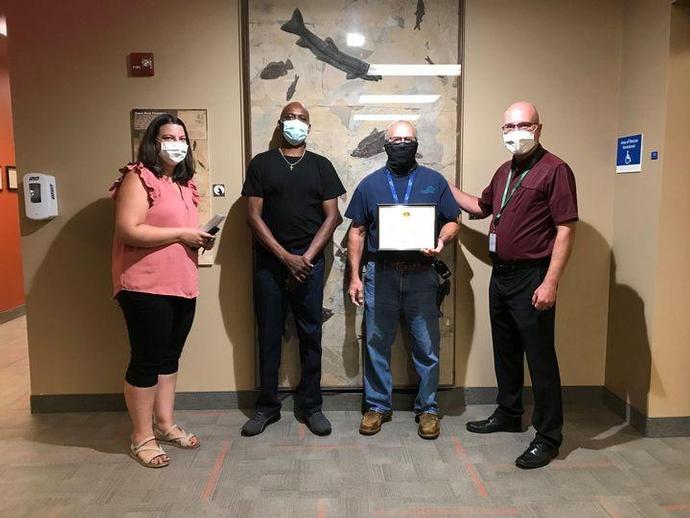
Congratulations to VMNH Trades Technician Donnie Jones for 20 years of service to the Virginia ...
September 21, 2021
Congratulations to VMNH Trades Technician Donnie Jones for 20 years of service to the Virginia Museum of Natural History!!! Donnie was recognized today for his longtime service by VMNH Executive Director Dr. Joe Keiper and colleagues Tim King (Building Operations Manager) and Jessica Davenport (Exhibits & Publications Manager). Thanks for all you do, Donnie!! [From left to right: Jessica Davenport, Tim King, Donnie Jones, Dr. Joe Keiper]

Ben here with another edition of #BenInNature presented by our friends at Carter Bank & Trust!
September 21, 2021
Ben here with another edition of #BenInNature presented by our friends at Carter Bank & Trust! There are all kinds of cool critters that are so small and well-camouflaged that we walk past them every day without even noticing. Case in point: Flatormenis proxima, the northern flatid planthopper! This species of planthopper is probably the most abundant member of its genus in the eastern U.S. Planthoppers tend to feed on the juices in the phloem of plants, which is the tissue that transports compounds (and especially sugars) throughout the plant. While planthoppers generally don't harm the plants they feed on, they can be vectors for plant diseases and their sugary droppings provide a great growing medium for mold. Most ...
Congratulations to Lisa L
September 21, 2021
Congratulations to Lisa L. Carter, of Richmond, and Arthur V. Evans, D.Sc., of Ashland, for their recent reappointments to the VMNH Board of Trustees by Governor Ralph Northam!

VMNH Assistant Curator of Paleontology Dr
September 21, 2021
VMNH Assistant Curator of Paleontology Dr. Adam Pritchard is back with a brand new edition of "Tales of Ancient Life". This week's episode is all about Ulughbegsaurus (yes, that's spelled properly) a new carnivorous dinosaur discovered in central Asia and how it competed with the tyrannosaurs of the time! Special thanks to Carter Bank & Trust (www.cbtcares.com) and Boxley Materials Company (www.boxley.com) for helping make this episode possible! ABOUT TALES OF ANCIENT LIFE Our planet has an incredible story to tell and VMNH Assistant Curator of Paleontology Dr. Adam Pritchard helps share it through his original video series, "Tales of Ancient Life". Dr. Pritchard uses spectacular fossils and other scientific specimens ...

Do you have what it takes to be Big Al's bodyguard?
September 21, 2021
Do you have what it takes to be Big Al's bodyguard? The Virginia Museum of Natural History is seeking a Museum Technician to provide security and assistance to museum staff and visitors as well as protection of museum assets. This is a part-time hourly wage position with no benefits; 29 hours per week, scheduled hours include days, evenings, or weekends. This position will provide security services for both VMNH sites in Martinsville (Starling Avenue and Douglas Avenue) and report to the Building Operations Manager. Learn more about this job opportunity at https://www.vmnh.net/about/careers!
**MUSEUM TO REQUIRE COVID-19 VACCINATION OR NEGATIVE COVID-19 TEST RESULT TO ATTEND DRAGON ...
September 20, 2021
**MUSEUM TO REQUIRE COVID-19 VACCINATION OR NEGATIVE COVID-19 TEST RESULT TO ATTEND DRAGON FESTIVAL FOR AGES 12 AND OLDER** The VMNH Dragon Festival normally draws crowds of people. To ensure full safety for all guests, vendors, performers, and staff, the Virginia Museum of Natural History will institute strict policies for participation in light of the COVID-19 pandemic and the circulation of highly transmissible variants. For the Dragon Festival on 15-16 October 2021, VMNH will require proof of a full course of COVID-19 vaccination or proof of a negative COVID-19 lab test (no at-home tests) taken within 72 hours prior to the event for patrons 12 and older. Patrons must present a completed paper or digital vaccination ...

Ben here with the Monday edition of #BenInNature presented by our friends at Carter Bank & Trust!
September 20, 2021
Ben here with the Monday edition of #BenInNature presented by our friends at Carter Bank & Trust! I found this catalpa sphinx moth (Ceratomia catalpae) bumming around at a gas station the other day! This large moth may not be particularly showy, but it has an interesting relationship with the tree that gives it its name. Catalpa moths are found in the eastern half of the U.S., and they occur wherever catalpa trees can be found. Catalpa trees grow beautiful, showy flowers that become long "beanpod" type structures. You might know the tree better by one of its alternate names: "Indian bean tree" or "Catawba." The caterpillars of these moths feed on catalpa trees exclusively, and on certain years, they can appear in such ...

We're reaching into the archives for today's #BenInNature update presented by our friends at ...
September 19, 2021
We're reaching into the archives for today's #BenInNature update presented by our friends at Carter Bank & Trust! The following post was originally published on August 8, 2020. Ailanthus altissima is commonly known as the "tree of Heaven," and frankly, Heaven should consider suing it for defamation of character. In its native China, this plant has a much more accurate name: 臭椿, which means "foul smelling tree." Ailanthus altissima is native to northeast and central China, but it was brought to Europe in the 1740s and the U.S. in 1784. It was initially considered a beautiful tree to plant in the garden, but gardeners soon discovered two unfortunate facts about the tree: one, it has a foul smell, especially ...
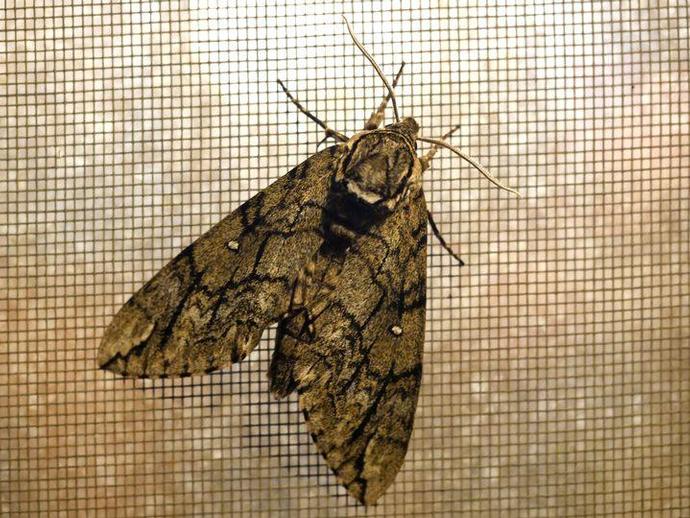
We're reaching into the archives for today's #BenInNature update presented by our friends at ...
September 18, 2021
We're reaching into the archives for today's #BenInNature update presented by our friends at Carter Bank & Trust! The following post was originally published on August 6, 2020. If you've been following these nature posts, you've probably noticed that I like to post cool moths. There are two in particular I'm still hoping to spot: the Luna moth (Actias luna), which seems to be everyone's favorite, and the cecropia moth (Hyalophora cecropia), which is the largest moth native to North America. While I haven't spotted those two yet, it seems like just about every other large moth in Virginia has paid a visit to my back porch, including today's critter: Ceratomia undulosa, the waved sphinx. While this may not be the most ...
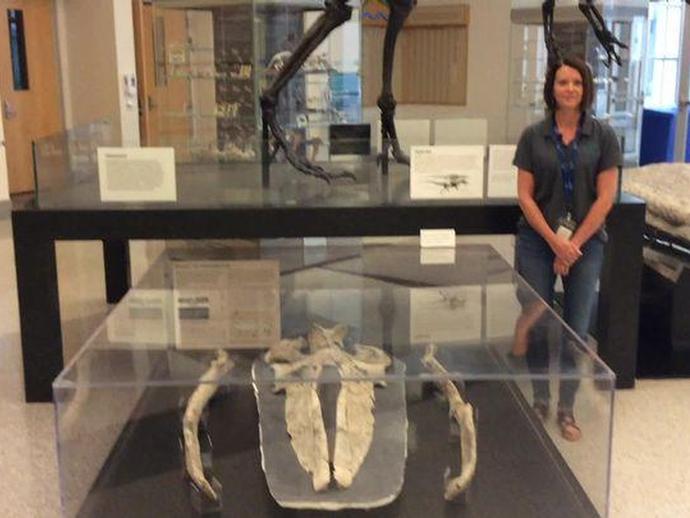
We're back inside the Harvest Foundation Hall of Ancient Life for this week's episode of "Museum ...
September 17, 2021
We're back inside the Harvest Foundation Hall of Ancient Life for this week's episode of "Museum Minute", as VMNH Education Manager Christy Deatherage highlights the sinistra whale fossils found near the iconic Allosaurus skeleton! ABOUT MUSEUM MINUTE The Virginia Museum of Natural History has a spectacular assortment of displays within its exhibit galleries! Some displays are unforgettable, while others don't always get the attention they deserve. Through the original series "Museum Minute", museum educators highlight various displays throughout the exhibit galleries, while providing intriguing facts you may not have known. "Museum Minute" is made possible thanks to VMNH Corporate Partners Carter Bank & Trust (www. ...

Ben here with another edition of #BenInNature presented by our friends at Carter Bank & Trust!
September 17, 2021
Ben here with another edition of #BenInNature presented by our friends at Carter Bank & Trust! I'm always a fan of cool moths, and the underwing moths (genus Catocala) are a particular favorite. This is Catocala piatrix, the penitent underwing! These moths are mostly found in the eastern half of the U.S., and depending upon the location, they can be found on the wing from July through early November. There's also a subspecies (Catocala piatrix dionyza) that is found in Arizona. The caterpillars feed on ash, butternet, hickory, pecan, persimmon, and walnut trees. These moths are most active about two hours after nightfall, although many species are also active for an hour or two each day right around noon. "Catocala" ...
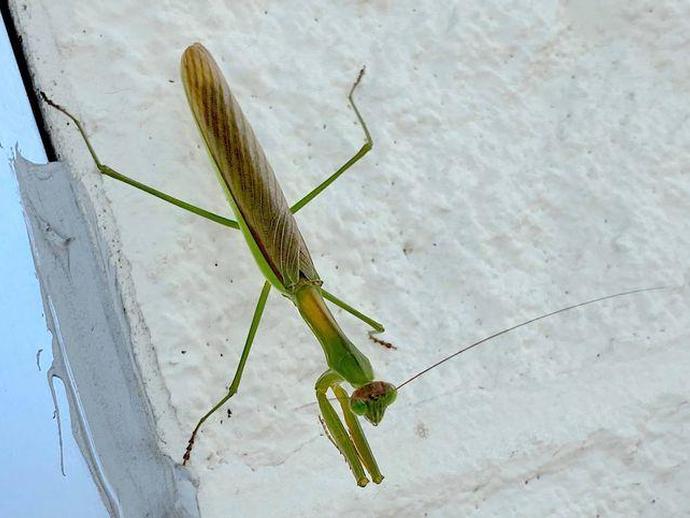
Ben here with the Thursday edition of #BenInNature presented by our friends at Carter Bank & ...
September 16, 2021
Ben here with the Thursday edition of #BenInNature presented by our friends at Carter Bank & Trust! I was walking into a hardware store the other day when I saw this guy hanging out next to the front door. This is Tenodera sinensis, better known as the Chinese mantis! The Chinese mantis is native to China, Japan, Korea, and other neighboring countries, but it was accidentally introduced to the U.S. in 1896 by an employee at a plant nursery near Philadelphia. Much like the European mantis (Mantis religiosa), it was later intentionally introduced in order to combat pest insects. If you've ever purchased a mantis ootheca (egg case) to release praying mantises into your garden, it was probably one of these two invasive ...
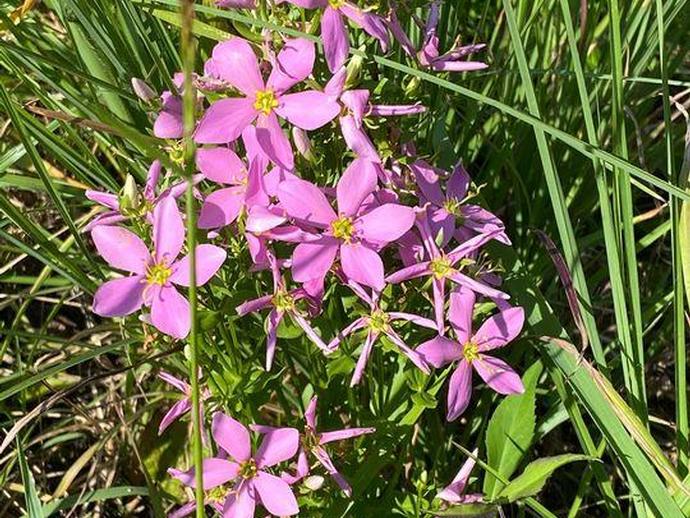
Ben here with today's edition of #BenInNature presented by our friends at Carter Bank & Trust!
September 15, 2021
Ben here with today's edition of #BenInNature presented by our friends at Carter Bank & Trust! I spotted a flower the other day that I don't recall seeing before. This is Sabatia angularis, better known as rosepink! There are about 20 different species in the genus Sabatia, some of which are cultivated as garden ornamentals. This particular species is native to the eastern U.S. and can be found in a variety of habitats, though it seems to prefer wide open areas. I found this one at the edge of a hayfield. Interestingly, rosepink occasionally has white flowers instead of pink ones, which is known as the albiflora form. This form is much less common, however. Rosepink is in bloom from July through September, so if ...
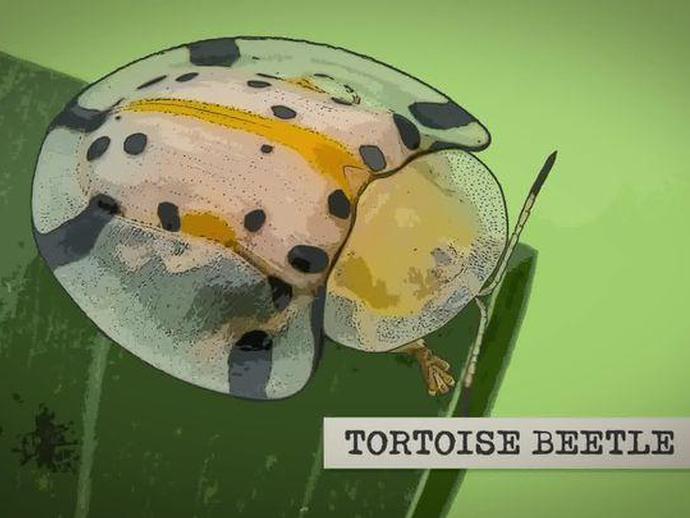
Learn about the clavate tortoise beetle and how it uses a fecal shield as a defense mechanism
September 14, 2021
Learn about the clavate tortoise beetle and how it uses a fecal shield as a defense mechanism. Dr. Art Evans, entomologist and VPM radio producer Steve Clark tell us all about this type of camouflage. https://vpm.org/whatsbuggingyou
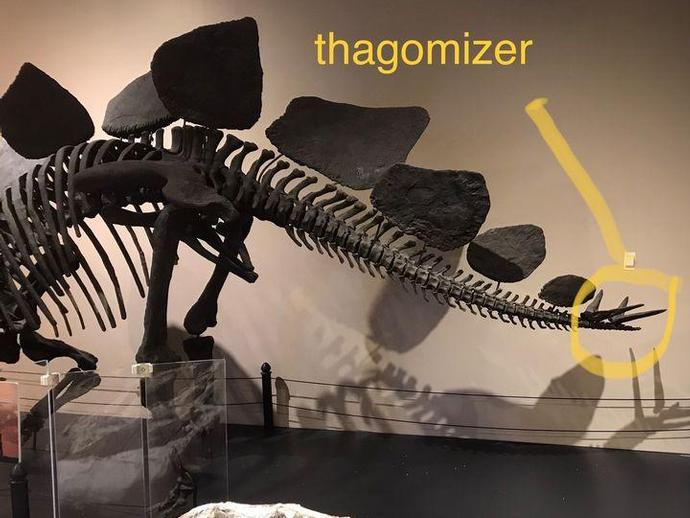
Yes, this is legit
September 14, 2021
Yes, this is legit. Did you know that paleontologists call the intimidating four-spiked tail of Stegosaurus a "thagomizer"? You're undoubtedly wondering what profound reasoning exists for naming it a "thagomizer". Turns out, the tail never had a widely accepted name until Gary Larson coined it in a classic "Far Side" cartoon and paleontologists kinda just went with it ever since. You can currently see our Stegosaurus's thagomizer in all its glory in the Science Exhibit Hall adjacent to the Harvest Foundation Hall of Ancient Life! #WhatWillYouDiscover?
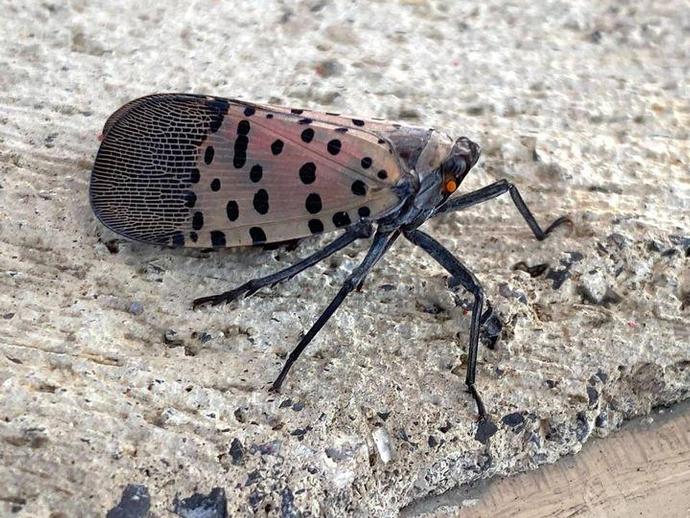
Ben here with the Tuesday edition of #BenInNature presented by our friends at Carter Bank & Trust!
September 14, 2021
Ben here with the Tuesday edition of #BenInNature presented by our friends at Carter Bank & Trust! Here's a critter that you won't find in southwest Virginia -- at least, you won't find it here yet, but you'll likely be seeing it before too long. This is Lycorma delicatula, better known as the spotted lanternfly! Over the weekend I drove up to Charles Town, West Virginia on an important museum-related mission (all right, I was getting a pinball machine, but I can multitask). On the way back, I stopped to grab a sandwich in Winchester, Virginia and discovered the parking lot was crawling with spotted lanternflies! So why is this a big deal? The spotted lanternfly is native to southeast Asia, but it has spread to Japan, ...
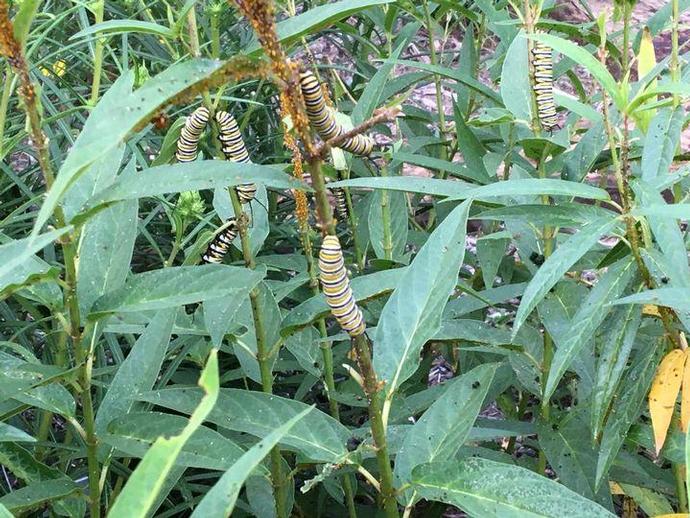
The Jim Tobin Monarch Waystation ...
September 14, 2021
The Jim Tobin Monarch Waystation, located near the museum's outdoor plaza, is currently teeming with life! VMNH Trades Technician Joe Dillon captured these pictures of numerous monarch caterpillars and a monarch chrysalis during his daily rounds. The Jim Tobin Monarch Waystation is a designated outdoor area that provides all of the resources necessary for monarch butterflies to successfully sustain their migration. Without milkweeds throughout their spring and summer breeding areas in North America, monarchs would not be able to produce the successive generations that culminate in the migration each fall. The waystation is named in honor of Jim Tobin, who served as the Executive Director of Piedmont Community Services in ...
Live from the Historic Wayne Theatre in Waynesboro, Virginia on tomorrow (September 14) at 7pm!
September 13, 2021
Live from the Historic Wayne Theatre in Waynesboro, Virginia on tomorrow (September 14) at 7pm! Also streamed live on the Facebook pages of the Wayne Theatre and Virginia Museum of Natural History! Don't miss out!!
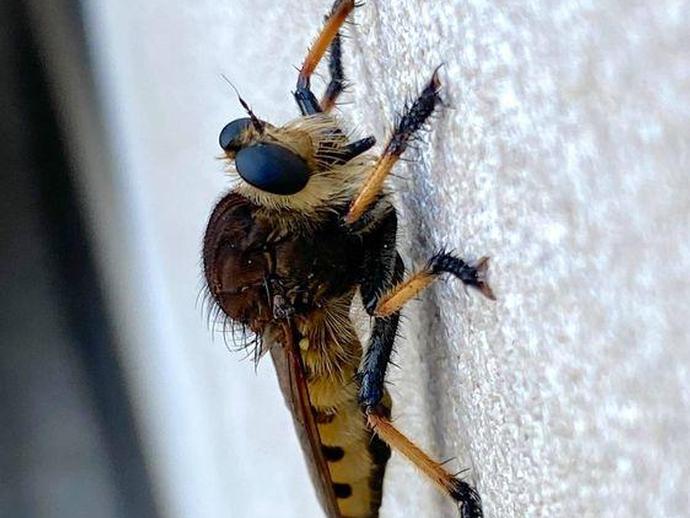
Ben here with today's edition of #BenInNature presented by our friends at Carter Bank & Trust!
September 13, 2021
Ben here with today's edition of #BenInNature presented by our friends at Carter Bank & Trust! I spotted this red-footed cannibalfly (Promachus rufipes) hanging out at the museum last week, most likely waiting for something tasty to arrive in our butterfly garden. These guys belong to the family Asilidae, also known as the robber flies or assassin flies, and when it comes to apex predators of the insect world, they're right up there with dragonflies! Robber flies are ambush predators and will snatch other insects right out of the air! They have powerful spiny legs that help them ensnare prey and a short, strong proboscis they use to stab their prey and inject it with enzymes that paralyze the insect and digest its ...

We're reaching into the archives for today's #BenInNature update presented by our friends at ...
September 12, 2021
We're reaching into the archives for today's #BenInNature update presented by our friends at Carter Bank & Trust! The following post was originally published on August 5, 2020. This is a crab spider of the genus Misumena, also known as the "flower crab spiders." We looked at one of these spiders awhile back, but we didn't get to see it doing what it does best: lying quietly in wait... This genus of spiders does something pretty clever: rather than going out on the hunt for delicious insects, they hide in flowers and let the insects come to them! When a pollinator lands on a flower -- in this case, a black-eyed Susan -- the spider springs into action, grabbing the insect and enjoying a tasty treat. Some spiders in this ...

We're reaching into the archives for today's #BenInNature update presented by our friends at ...
September 11, 2021
We're reaching into the archives for today's #BenInNature update presented by our friends at Carter Bank & Trust! The following post was originally published on August 4, 2020. Here we see the brilliant dogbane beetle (Chrysochus auratus) enjoying lunch. These beetles generally feed on plants in the dogbane genus (Apocynum), which are commonly found at roadsides. However, they will also eat milkweed, which is what this particular beetle is enjoying. The specific name of this beetle, "auratus," comes from the Latin root "aurat," meaning "gold" or "golden." The iridescent shells of these beetles sometimes appear almost golden, and can also appear to have red, green, and blue coloration. The effect is almost like a ...
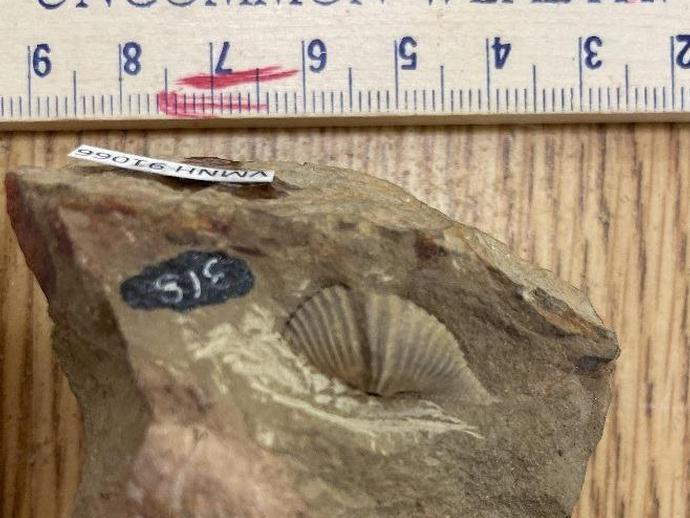
It's time for another #FossilFriday from the Virginia Museum of Natural History!
September 10, 2021
It's time for another #FossilFriday from the Virginia Museum of Natural History! Trying to identify this one will be tricky...are you up to the challenge? The answer will be posted next Friday (September 17). Fossil Friday ID from August 27 On Friday, August 27, we posted an image of an unknown Trilobite believed to be from the Early Cambrian Rome formation in Virginia. While not definitive, the museum is currently identifying it as Ptychoparella. #WhatWillYouDiscover?
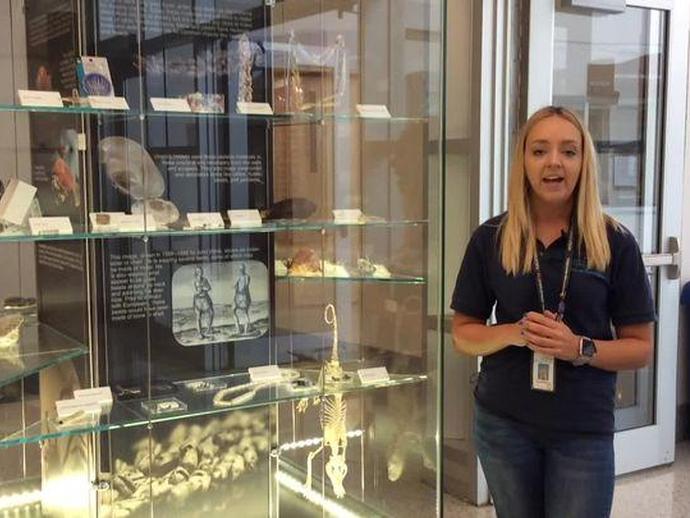
Museum Educator Terri Robertson is back inside the Harvest Foundation Hall of Ancient Life for ...
September 10, 2021
Museum Educator Terri Robertson is back inside the Harvest Foundation Hall of Ancient Life for this week's episode of "Museum Minute" as she highlights bones and shells that can be found within the "Stories from Skeletons" exhibit! ABOUT MUSEUM MINUTE The Virginia Museum of Natural History has a spectacular assortment of displays within its exhibit galleries! Some displays are unforgettable, while others don't always get the attention they deserve. Through the original series "Museum Minute", museum educators highlight various displays throughout the exhibit galleries, while providing intriguing facts you may not have known. "Museum Minute" is made possible thanks to VMNH Corporate Partners Carter Bank & Trust (www. ...

During your end-of-summer beach trips ...
September 10, 2021
During your end-of-summer beach trips, you won't have to worry about seeing any giant sharks with jaws quite like this one! This reconstructed megalodon jaw, which is currently on display at the museum, contains actual fossil teeth discovered in Caroline County, Virginia. Although the megalodon has been extinct for millions of years, when it was alive, this shark was over 13 times the size of an average 10 year old child! How do we know so much about this sea creature? Teeth from the megalodon and other sharks are some of the most common fossils, but their bodies were made of flexible cartilage that was rarely preserved in the fossil record. Nearly everything scientists know about these ancient sharks come from studying ...
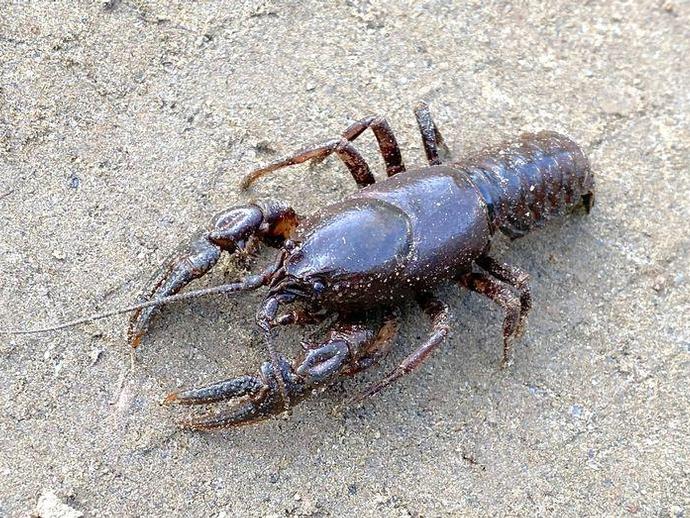
Ben here with the Friday edition of #BenInNature presented by our friends at Carter Bank & Trust!
September 10, 2021
Ben here with the Friday edition of #BenInNature presented by our friends at Carter Bank & Trust! Here's something a little unusual to close out the week! Not too long ago, VMNH Associate Curator of Entomology Dr. Kal Ivanov came over to my place to look for bugs, and while we were walking along, we spotted this crayfish (family Cambaridae) strolling down the middle of my road without a care in the world. It's not the first time I've seen a crayfish walking on land; on a rainy night a couple years ago, one strolled right up to my back porch! Why would a critter that seems to spend its time in creeks and streams suddenly decide to take to dry land? There are many, many different species of crayfish, with the greatest ...
The storied Monuments Men unit of World War II has been reactivated for the modern age ...
September 10, 2021
The storied Monuments Men unit of World War II has been reactivated for the modern age, and an integral part of their new operation, the Cultural Heritage Monitoring Lab, is headquartered right here at the Virginia Museum of Natural History!
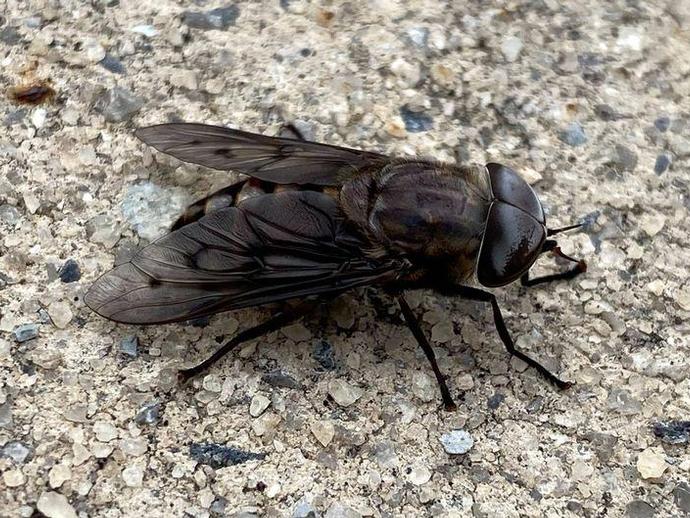
Ben here with the Thursday edition of #BenInNature presented by our friends at Carter Bank & ...
September 9, 2021
Ben here with the Thursday edition of #BenInNature presented by our friends at Carter Bank & Trust! This is the horse fly Tabanus sulcifrons, and like all horse flies in the genus Tabanus, this is not a critter you want to see landing on your bare skin! Horse flies are found nearly all over the world, except for some islands and the polar regions. They are active during the day and tend to prefer flying on sunny days. Adult horse flies, believe it or not, feed on flower nectar. However, as anyone who has ever visited a swimming pool on a bright summer day can attest, they aren't afraid to bite humans and lap up our blood! While males don't drink blood, female horse flies are "anautogenous," which means they require a ...
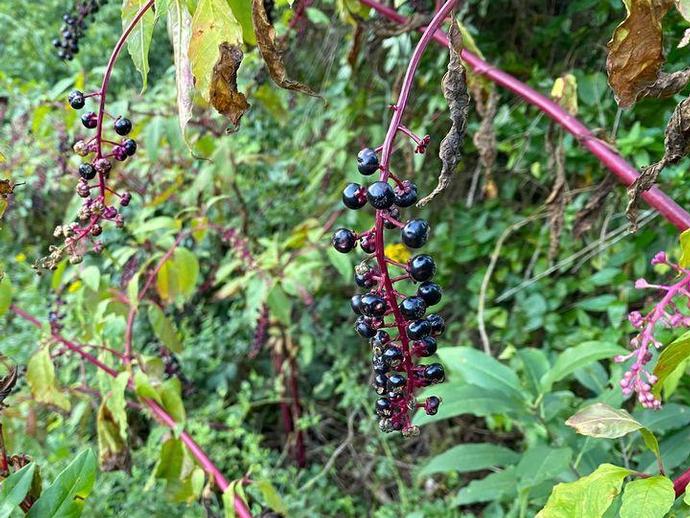
Ben here with today's #BenInNature update presented by our friends at Carter Bank & Trust!
September 8, 2021
Ben here with today's #BenInNature update presented by our friends at Carter Bank & Trust! Phytolacca americana, better known as pokeweed, is one of our easiest native plants to identify -- and it's a good thing, too! While many people eat parts of the pokeweed plant, it can be extremely toxic if you don't know exactly what you're doing! Pokeweed is native to the eastern U.S., the midwest, the Gulf Coast, and the west coast; it's also an introduced weed in Japan. It's most often found growing in pastures, edge habitats, along fences, and in wastelands and recently cleared areas. It grows quickly through the summer and is considered a pest species by farmers as it can poison dogs and livestock. Despite its toxicity, ...
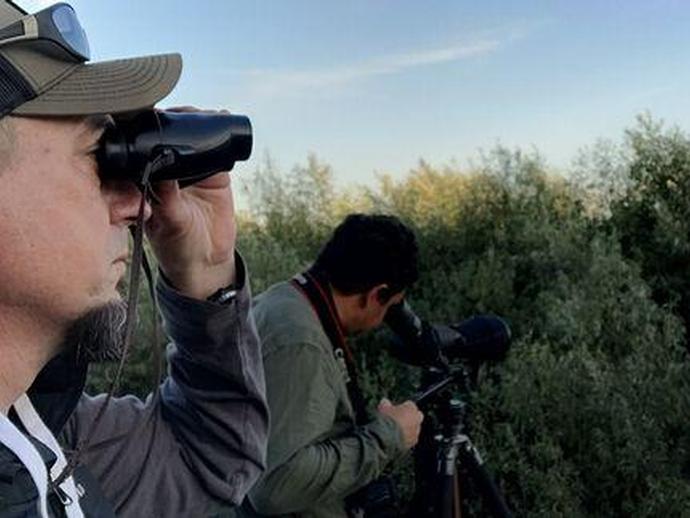
Today, while vacationing in Europe, VMNH Associate Curator of Invertebrate Zoology Dr
September 8, 2021
Today, while vacationing in Europe, VMNH Associate Curator of Invertebrate Zoology Dr. Kal Ivanov joined local bird expert Strahil Peev on a birding trip along the mighty Danube - Europe's second largest river. Despite the chilly morning temperatures, the pair managed to record 34 species, including Pygmy Cormotant, Great Cormorant, Mute Swan, Gray Heron, Little Egret, Little Ringed Plover, and four species of gulls; the most exciting of which was a single Lesser Black-backed Gull! #WhatWillYouDiscover?
JOB OPPORTUNITY: Assistant Curator - Herpetology The museum seeks a dynamic individual to ...
September 7, 2021
JOB OPPORTUNITY: Assistant Curator - Herpetology The museum seeks a dynamic individual to conduct integrative, field and collections-based research in herpetology. The successful candidate will be expected to obtain external funding to support their research efforts. Area of specialization is open, but an active interest in extant museum collections in herpetology is a plus. Click the link to learn more!
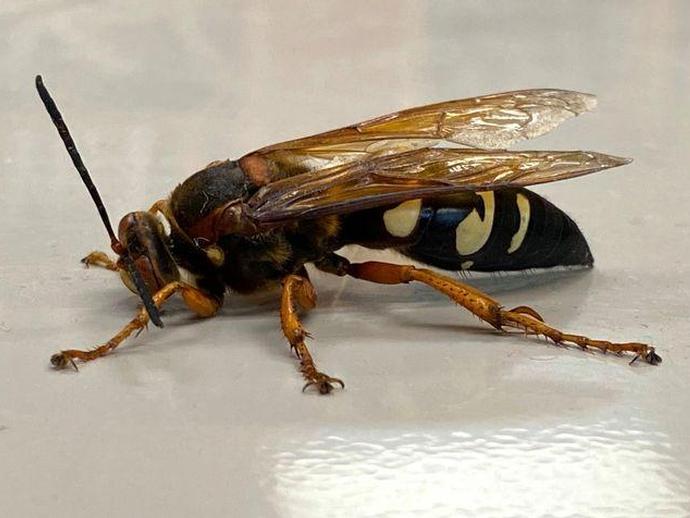
Ben here with the Tuesday edition of #BenInNature presented by our friends at Carter Bank & Trust!
September 7, 2021
Ben here with the Tuesday edition of #BenInNature presented by our friends at Carter Bank & Trust! This is a critter that popped up on our VMNH Facebook feed a couple of weeks ago in an archived nature post from last summer, but I wanted to take a moment to highlight it again for two reasons. One, we spent last week looking at some common Virginia insects that are often mistaken for the dreaded Asian giant hornet (Vespa mandarinia), and this is certainly one of the most famous. Two, these are much better photos than I had last year! This is Sphecius speciosus, better known as the eastern cicada killer. These are truly fascinating little animals. Cicada killers are digger wasps, and they can grow to be as much as two ...
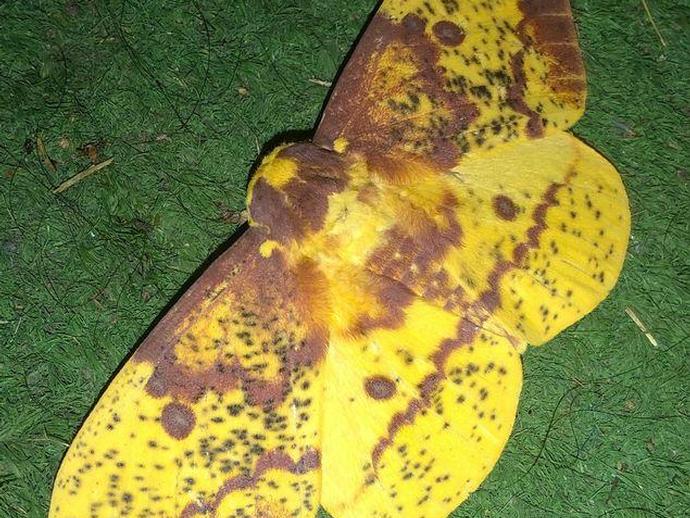
Happy Labor Day!
September 6, 2021
Happy Labor Day! Ben is taking a well-deserved day off, so we're reaching into the archives for today's #BenInNature update presented by our friends at Carter Bank & Trust! The following post was originally published on August 3, 2020. When summer arrives, there's no shortage of large, beautiful moths that might show up to your porch light. The Imperial moth (Eacles imperialis) is a particularly striking example. These moths can have a wingspan of nearly seven inches! There's a great deal of color variation between individual Imperial moths, but they're primarily yellow with blotches of brown, red, and purple. This coloration serves as excellent camouflage, and they virtually disappear among decomposing leaves on the ...
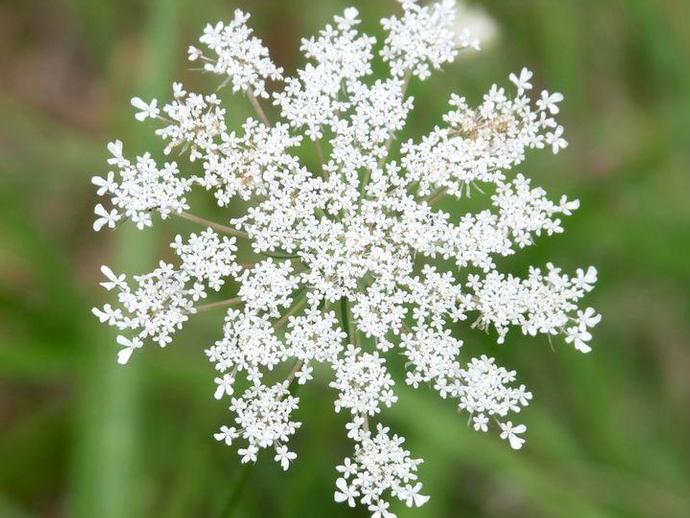
We're reaching into the archives for today's #BenInNature update presented by our friends at ...
September 5, 2021
We're reaching into the archives for today's #BenInNature update presented by our friends at Carter Bank & Trust! The following post was originally published on August 2, 2020. Just like the red clover we looked at yesterday, Queen Anne's lace (Daucus carota) is one of those plants that you assume is native to the US, but it actually comes to us from Europe and Asia! Queen Anne's lace is also known as "wild carrot," and with good reason; the domesticated carrots we enjoy are cultivars of a subspecies of this plant, Daucus carota subsp. sativus! The root of Queen Anne's lace is edible while it's young, but if you wait too long, the root will be too tough to eat. In any case, you should probably avoid it altogether, ...

We're reaching into the archives for today's #BenInNature update presented by our friends at ...
September 4, 2021
We're reaching into the archives for today's #BenInNature update presented by our friends at Carter Bank & Trust! The following post was originally published on August 1, 2020. Red clover (Trifolium pratense) is one of those plants that's so ubiquitous, you would never think it wasn't native to the U.S. In fact, red clover is native to Europe, northwest Africa, and western Asia, but it's been naturalized in North and South America. Between 1909 and 1920, it's estimated that red clover was planted on about 35 million acres in the US. Planting clover made a lot of sense; it's very good at fixing nitrogen in the soil, it can be used as clover hay, and it provides a great deal of protein to grazing livestock. Unfortunately, ...
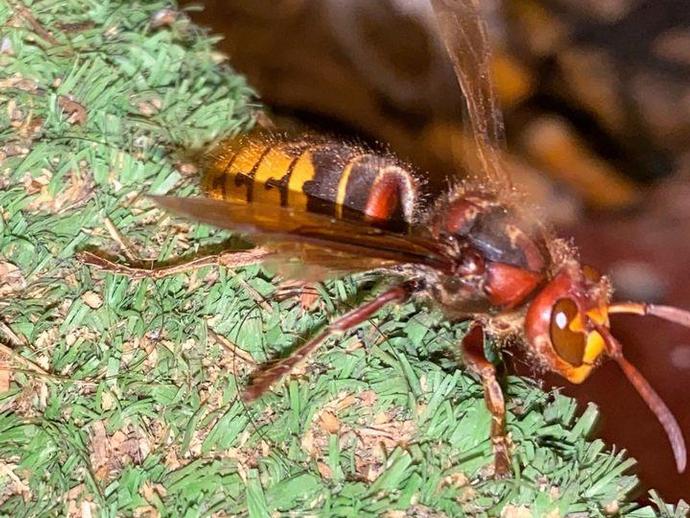
Ben here with another edition of #BenInNature presented by our friends at Carter Bank & Trust!
September 3, 2021
Ben here with another edition of #BenInNature presented by our friends at Carter Bank & Trust! I was inspired to spend this whole week highlighting some of the stinging insects of Virginia because I've been getting a lot of requests recently for more information on the "murder hornet," more accurately known as the Asian giant hornet Vespa mandarina. Fortunately, the only Asian giant hornets that have been found in the U.S. have been limited to the Pacific Northwest, so they're not a concern for us here in Virginia. However, we do have a hornet that has been frequently misidentified as the Asian giant hornet: the European hornet Vespa crabro. As the name suggests, these hornets are native to Europe but were introduced in ...

JOB OPPORTUNITY!
September 3, 2021
JOB OPPORTUNITY! The Virginia Museum of Natural History is seeking a Museum Technician to provide security and assistance to museum staff and visitors as well as protection of museum assets. This is a part-time hourly wage position with no benefits; 29 hours per week, scheduled hours include days, evenings, or weekends. This position will provide security services for both VMNH sites in Martinsville (Starling Avenue and Douglas Avenue) and report to the Building Operations Manager. Learn more about this position at: www.vmnh.net/about/careers
Archives
2026
2025
2024
2023
2022
2021
2020
2019
2018
2017
2016
2015
2014
2013
2012
2011
2010
2009
2008

Please Visit Us Soon
Hours:
Tuesday - Saturday: 10am - 4pm
Sunday: Noon to 4pm (Memorial Day Weekend through Labor Day Weekend only)
Monday: Closed
Admission:
$12 for ages 18-59
$6 for ages 3-17, seniors 60+, and college students
FREE for children under 3, museum members, members of ASTC Passport participating institutions, and EBT cardholders
My 4 year old son loves going to the museum. The exhibits are educational, interactive and kid-friendly.
”

 Hours & Admissions
Hours & Admissions Directions
Directions